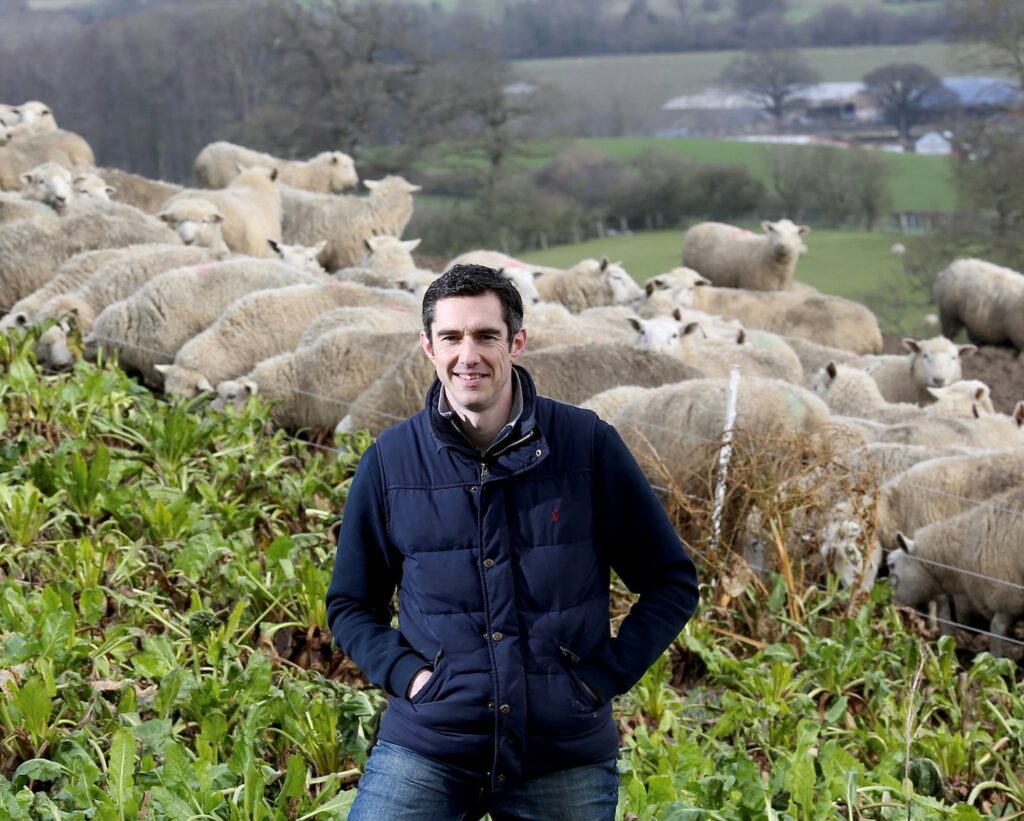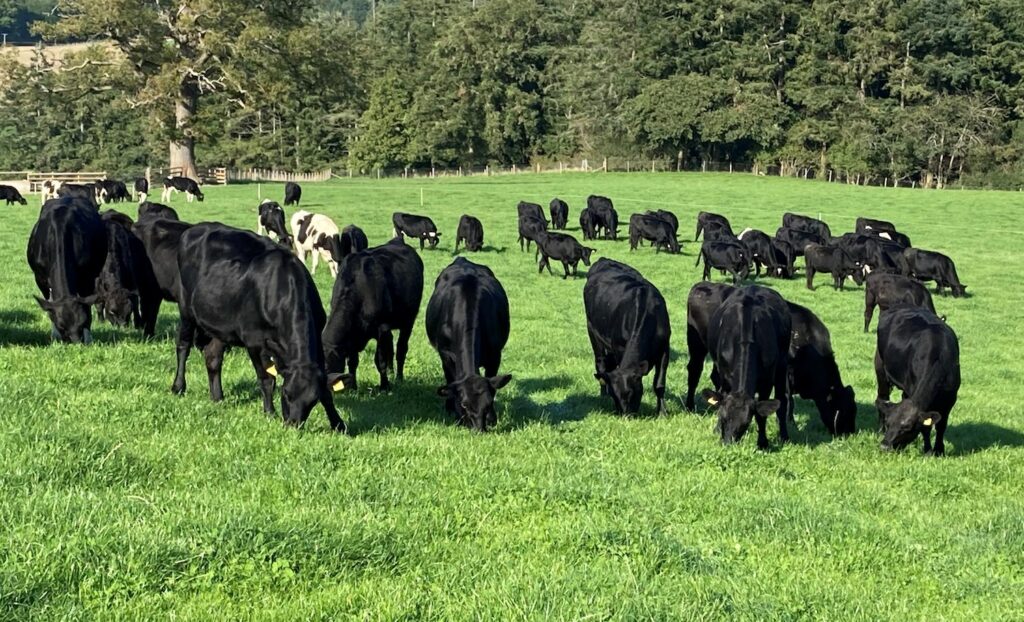Grassland management at the forefront of Aberdeen Angus system
17th November 2021
At the award-winning Trefnant Hall Farm, making the most of every sward is the priority for creating a profitable beef and sheep enterprise.
The 200ha rented farm in Welshpool is run by Marc Jones, the 2021 winner of the British Grassland Society Grassland Farmer of the Year competition, who focuses on achieving the highest number of kilos of beef produced per hectare.
“To maintain a profitable business, we need to adopt an approach which suits our land,” says Mr Jones. “For us, that means making the most of every hectare, and finishing our cattle and sheep off grass, with minimal additional inputs.”
Mr Jones and his family run a herd of 700 Aberdeen Angus dairy-cross cattle, alongside 630 New Zealand Romney sheep.
“We lamb outdoors from the 1st April, selling our lambs to Tesco via Kepak. The flock is out-wintered on fodder beet with the aim of rearing 1.45 lambs per ewe to a target carcass weight of 19.5kg off grass,” he explains.
“On the beef side, we buy in 350 Aberdeen Angus cross dairy heifer calves every autumn at three weeks of age. The calves are reared through the first winter, where they are transferred from milk and ad lib concentrates to high quality grass silage before turnout. The cattle are then grazed at grass before being wintered on fodder beet for their second winter. Finally, they’re turned back onto grass in the spring to be finished at 22-24 months.
“The aim is to finish off grass,” he notes. “For the cattle, our target is to achieve a lifetime gain of at least 0.7kg daily live weight gain (DLWG) in order to achieve a carcass weight of around 300kg.”
Choosing a breed fit for the future
Mr Jones first introduced Aberdeen Angus genetics in 2017.
“We chose Aberdeen Angus genetics initially because of the premium offer by the end market – it stacks up for us with our dairy cross genetics. Aberdeen Angus beef is also renowned for its high meat-eating quality, which means there’s always a demand for our meat. Every penny counts, so having a breed that is known as a ‘brand’ in its own right by the consumer, is a sensible business decision.
“The genetic make-up of the cattle also suits our system, allowing us to produce the best beef we can,” he adds.
One key performance indicator (KPI) at Trefnant Hall Farm is kilos of meat per hectare.
“We aim across beef and lamb to produce 1,000kg of live weight/ha, with our cattle making up a big proportion of this. One of the key attributes of the Aberdeen Angus breed is its ability to convert grazed grass to meat, so again a big plus point for our system.”

Marc Jones.
Making the most of every sward
The topography of Trefnant Hall means grass forms the foundation of the system.
“We’re on rented land on two farms ranging from 185–340m above sea level, so we have to base our business model on good grassland and forage management,” says Mr Jones. “We’re happy with the number of animals we’re rearing, so it’s all about maximising the production of what we have.”
As part of the GrassCheck project, weekly grass measurements are taken so performance is monitored and benchmarked. “We’ve used this data to tweak the leys we grow, adding in more herbal mixes. We now include cocksfoot, chicory, white clover and plantain as well as red clover to support the young cattle growth.”
Alongside the permanent pasture, 22.5ha of fodder beet is grown for cattle and sheep to be out-wintered on.
“For our silage, we grow around 16ha of short-term leys which are silaged and clamped ready for the winter to feed our weaned calves. Long-term leys are used for round bale silage to feed cattle when they’re on the fodder beet. In a good year, we hope to get 650 bales from 40ha.
“It’s all about making small improvements for big gains, and we’ve found that paying close attention to what goes into our cattle and sheep is shown in the end result,” he concludes.

